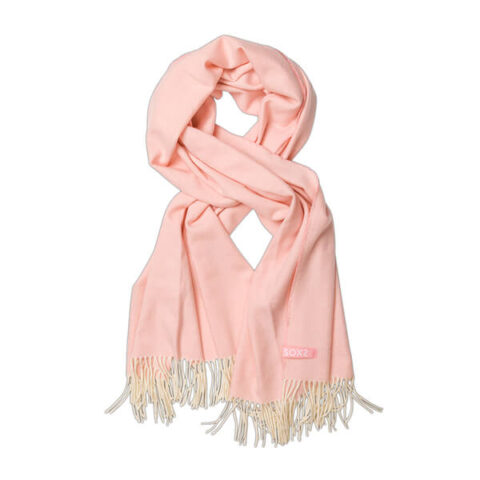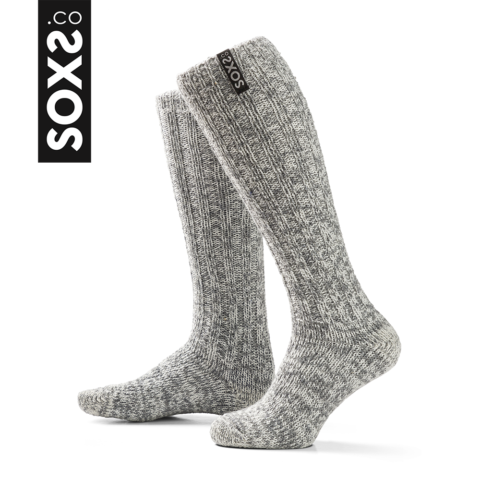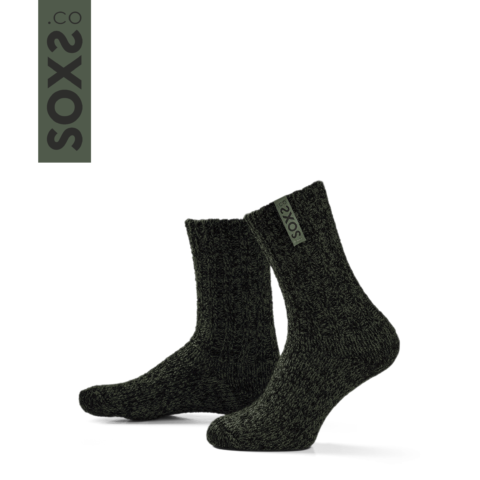Soft warm premium wool socks
Gift ready, stylishly packaged
Orders placed before 1:00 PM will be shipped today (on weekdays) PLEASE NOTE: The delivery time of Pimp My Soxs is 5 working days!
Wool offers natural benefits that make it ideal for keeping you warm during cold weather. Its unique insulation properties and eco-friendly nature make wool a practical choice for comfortable socks. From the softness of cashmere to the lightweight warmth of alpaca and the versatile performance of merino, each wool type brings its own qualities to your daily comfort.
Wool keeps you warm through its natural fiber structure. The crimp in wool fibers creates small air pockets that trap heat while allowing your skin to breathe. These air pockets work as effective insulation against cold temperatures. The diameter of wool fibers also plays an important role – finer fibers create more insulation by trapping additional air while maintaining softness against your skin.
This natural insulation system works efficiently whether you’re active outdoors or relaxing at home. Your feet stay warm without overheating, making wool socks suitable for various activities throughout the day.
Merino wool stands out for its fine fibers that provide excellent temperature regulation. These fibers effectively wick moisture away from your skin, keeping your feet dry and comfortable during both rest and activity. The natural softness of merino makes it pleasant to wear directly against your skin without the itchiness sometimes associated with traditional wool.
The balance of warmth and breathability makes merino wool socks particularly suitable for outdoor activities. They maintain a comfortable temperature while preventing your feet from becoming damp, which is essential for long-lasting comfort during walks, hikes, or everyday wear.
Alpaca wool provides exceptional warmth with minimal weight. Its hollow fiber structure traps more heat than traditional sheep’s wool while maintaining a lightweight feel. This makes alpaca wool socks both warm and comfortable without feeling bulky in your shoes.
The natural softness of alpaca wool is gentle on your skin, making it a good option if you find traditional wool slightly irritating. Both alpaca and sheep’s wool have their advantages, with alpaca offering additional warmth without extra weight – a practical benefit for daily wear.
Cashmere wool delivers remarkable warmth while remaining exceptionally soft and lightweight. Its fine fibers create effective insulation without the bulk of heavier materials, making cashmere socks both practical and comfortable for everyday wear.
The insulating quality of cashmere comes from its unique fiber structure, which traps warmth efficiently while allowing your skin to breathe. While cashmere requires a higher investment, its combination of softness and warmth makes it a valuable addition to your sock collection, especially during colder months.
Wool offers several advantages over synthetic alternatives like polyester fleece or Thinsulate. The natural fibers in wool socks allow moisture to escape while retaining heat, creating a more comfortable experience during various activities. Your feet stay warm without becoming sweaty, which is particularly important during active outdoor pursuits.
From an environmental perspective, wool is a renewable resource that naturally biodegrades at the end of its life. This contrasts with many synthetic materials that can persist in the environment for decades. By choosing wool socks, you gain both performance benefits and make a more sustainable choice for your wardrobe.
Proper care helps maintain the warmth and comfort of your wool socks over time. Wash them using a gentle wool detergent on a wool washing program or by hand to preserve the natural fiber structure. Avoid high temperatures that can damage the wool fibers and reduce their insulating properties.
Store your wool socks in a cool, dry place with sufficient space to maintain their shape and loft. With these simple care practices, your wool socks will continue to provide warmth and comfort through many seasons of wear.
Wool is a sustainable choice for warm socks due to its natural origins and minimal environmental impact. As a biodegradable material, wool returns to the earth at the end of its lifecycle without leaving harmful residues. The annual shearing process provides a continuous supply of wool without harming the animals.
At SOXS, we source our wool from Mulesing-Free New Zealand sheep, ensuring both animal welfare and sustainable farming practices. Our wool socks are made with care for people, animals, and the planet. By choosing wool socks from SOXS, you support responsible production while enjoying the natural comfort and warmth that quality wool provides.
Curious about which wool socks might suit your daily activities best? Discover our complete collection at soxs.co.

200 x 75 cm

Knee height

Calf height